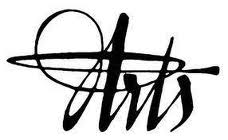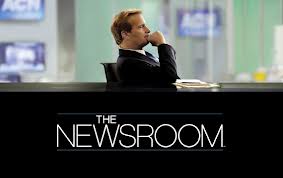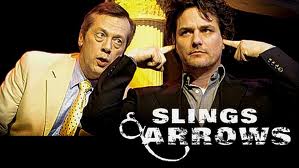If supply and demand is a fundamental tenet of economics, then the tweet offer last summer from New York’s Soho Rep, during its sold-out run of Uncle Vanya, made no sense – “99¢ Sunday performance tonight at 7.30pm”. Why would it undermine something so desired as a seat to this show? Why wasn’t the price for this heretofore unavailable cache of seats $299.99?
As explained on its website: “Soho Rep is thrilled to offer 99¢ Sundays on selected Sunday performances to make our shows accessible to the widest audiences possible.”
The catch was that one could only buy the tickets, in person, an hour before the show. While admiring the gesture, I had visions of hundreds of people showing up and most being disappointed, because Soho Rep seats only 75.
Certainly one could look at this offer and think it is great value. That is true for those who were able to buy a seat. For those who were turned away, it was a disappointment and loss of time. And time, to use another basic economic tenet, is money. These days, however, the cost-value equation in theatre is vastly more complicated than ever before. As price has become fluid, it is hard to determine where true value lies.
When people wait in line, sometimes overnight, for the Public Theater’s free Shakespeare in Central Park, the ticket they get is indeed gratis. But if seven or eight hours sleeping among strangers outdoors results in attendance at a disappointing show, which can happen, then there was a high cost for little value (or, with a great show, a cashless bargain), calculable only by a subjective assessment of the worth of each individual’s time (although the overnight experience is its own type of participatory theatre).
While the time commitment necessary for acquiring tickets for Shakespeare in the Park is likely much greater than that required for 99¢ Sunday at Soho Rep (unless one is lucky enough to secure a ticket through the ‘virtual line’ online), the odds are also more favourable, since the open-air Delacorte seats some 2,000 per performance and every single performance is free, although the commitment to acquire a ticket carries risk through the final curtain – should it begin to rain ten minutes into the performance, the show may have to stop and all value is lost.
To go to the opposite end of the spectrum, take Book of Mormon, arguably the hottest ticket on Broadway. The least expensive ticket is priced at $69, but if you can secure one, it may well be for a performance months away. If you do not want to wait so long, you can, if you can afford it, buy a VIP seat for up to $500. This is a pure case of supply and demand, but it is not new. Eleven years ago, The Producers began offering premium seating at $488 per ticket. There were, then as now, various expressions of dismay, but desire trumps thrift.
Some might argue that the scarcity and cost of Mormon serves to make the experience even more valuable, as price can be an expression of worth. Having seen the show becomes a status symbol. In a unique move, perhaps an effort to diffuse frustration on the part of thwarted or economically constrained would-be ticket buyers, Mormon periodically holds ‘fan appreciation day’ performances, distributing tickets for free, akin to the Shakespeare in the Park model.
What falls between these scenarios? Rush tickets, sold on the day of the show or shortly before curtain, have been common in regional theatre fordecades. Somewhat newer ‘pay what you can’ performances are offered by some companies at early previews. Broadway shows have adopted the ‘ticket lottery’ model, holding back front-row seats at young-skewing shows such as Wicked or American Idiot, available at low price through a raffle two hours prior to curtain. In most of these cases, access to the theatre itself is essential. Every instance carries risk (will you get a ticket?), personal cost (time and effort) and value (cheap tickets).
In the UK, the Barclays Front Row scheme at the Donmar Warehouse is a lottery-rush hybrid, guaranteeing 42 low-priced seats at each performance, sold Monday mornings for the coming week (with a website clock counting down to the moment of release).
Discounting is rife on Broadway. All but the biggest hits usually have discount offers, sometimes as much as 40% off the declared value, that can be uncovered with an internet search, or in your mailbox if you are a regular theatregoer. Discounts not only allow, but also encourage, advance sales, with no great time investment. Producers trade savings for guaranteed money in the till.
The TKTS booth in Times Square may yield a 50% off price, only day-ofshow and it requires your time and presence, as lines can be long and subject buyers to the vagaries of weather (in contrast to the Leicester Square booth in London, where I have never waited more than five minutes). Both the UK and US TKTS booths have partially reduced potential disappointment by listing available shows online or by mobile app. The actual discount can be variable.
In another iteration of price/value matrix for theatre tickets, dynamic pricing seems the most clear-cut exemplar of supply and demand. I say ‘seems’ because those who employ such systems, in which prices shift according to popularity, tend only to shift prices upward opportunistically, such as increases during holiday weeks, or as a limited run approaches capacity. Price reductions are not usually found at the box office. Price charts in Broadway theatres are now all displayed on video monitors, the easier to alter as needed. Dynamic pricing is not employed only by commercial productions – subsidized theatres use it as well, raising for some the question of whether not-for-profit theatres are now pursuing profits, or simply maximising their income to support ongoing artistic and community efforts.
There is one more model of the theatrical price-value challenge, seen in the £12 Travelex season at the National Theatre in London and the $25 price for all seats, thanks to Time Warner, at New York’s Signature Theatre. These both offer great value at a most reasonable cost, as both are exceptional companies. The sponsors that make such programmes possible, as well as the theatre staff who secure the funds, are to be applauded. But with the stated goal of making theatre accessible to everyone, it is interesting to consider what both the short-term and long-term implications will be. When top-notch theatre is offered at an artificially low price, does it make the challenge of selling tickets for every competing organization that much more difficult? Could these prices simply be providing those who can afford market price a discount they never sought? Will patrons forgo comparable theatre devoid of subsidy?
In the jungle of discounts and rising costs, we have to look at the National, Donmar and Signature efforts, and others like them, as the start of admirable and essential long-term experiments. Since low-priced tickets are not being offered simply to fill houses, but to make tickets more generally accessible, they are bellwethers that can tell us if price is indeed a barrier to theatre attendance, and if, by removing that impediment, theatre can draw in new and younger audiences.
Signature’s can only be studied at some point in the future, as every ticket is low-priced, flat rate and subsidised for years to come. The National reports that annually, 22% of the Travelex tickets are sold to first time attendees. The very early weeks of the Donmar plan shows some 40% of the Front Row seats going to patrons new to their customer rolls.
As the means of selling and acquiring tickets mirror conventional marketplace practices, while at the same time initiatives rise up to spur sales to more demographically and economically differentiated audiences, the matrix of price and value becomes ever more complex. For producers, there is flexibility to adapt as never before. For patrons, the price points can become advantageous or prohibitive. Hopefully, in this new and perpetually evolving world, theatregoing will not be predicated and expanded solely on the cheapest access possible, but on the fundamental and incalculable premise of the art of the theatre itself having meaning for those who seek to attend.
 Perhaps you were asleep. Or drowsy. Or buzzed from a drinking game.
Perhaps you were asleep. Or drowsy. Or buzzed from a drinking game.








 It is unfortunate that “zirkusschadenfreude” is not an actual German word, because there seemed to be a lot of it flying around last week, that is to say, “joy at the unhappiness of a circus.” Many news outlets and commentators were pulling out the wordplay a bit gleefully last week on the news that Canada’s famed
It is unfortunate that “zirkusschadenfreude” is not an actual German word, because there seemed to be a lot of it flying around last week, that is to say, “joy at the unhappiness of a circus.” Many news outlets and commentators were pulling out the wordplay a bit gleefully last week on the news that Canada’s famed  The layoff announcement was the latest in a string of bad news emanating from Cirque, which has of late dealt with several shows closing much earlier than expected; Iris at the one-time Kodak Theatre in Los Angeles is
The layoff announcement was the latest in a string of bad news emanating from Cirque, which has of late dealt with several shows closing much earlier than expected; Iris at the one-time Kodak Theatre in Los Angeles is  Now I should say that as an audience member, I’m wildly ambivalent about Cirque. I’ve seen them six times as I recall: their first U.S. tour, of Nouvelle Experiénce, in Seattle in 1990; Mystère at Treasure Island in Las Vegas circa 1998; the Dralion tour in Santa Monica in 1999; O and Love in Vegas in 2010, and Zarkana at Radio City Musical Hall in 2011. You’ll notice a 10 year hiatus, and that’s because after my enthusiasm for Nouvelle, my second and third experiences seemed diminishing returns; only years of emphatic recommendations brought me back two years ago, to my utter delight.
Now I should say that as an audience member, I’m wildly ambivalent about Cirque. I’ve seen them six times as I recall: their first U.S. tour, of Nouvelle Experiénce, in Seattle in 1990; Mystère at Treasure Island in Las Vegas circa 1998; the Dralion tour in Santa Monica in 1999; O and Love in Vegas in 2010, and Zarkana at Radio City Musical Hall in 2011. You’ll notice a 10 year hiatus, and that’s because after my enthusiasm for Nouvelle, my second and third experiences seemed diminishing returns; only years of emphatic recommendations brought me back two years ago, to my utter delight. My own back and forth opinions on the shows themselves may be reflective of erratic quality control and perhaps overproduction (they recently began producing several new shows annually instead of one), but O and Love were so remarkable that I’m eager to see them again, even at $150 a ticket, and I’m regretting having skipped Ka, which I hear is also incredible. I’m not the first to suggest that Cirque is most successful when they’re in venues specifically built, or radically refurbished, for their sit-down shows; perhaps they have grown too big for the big top.
My own back and forth opinions on the shows themselves may be reflective of erratic quality control and perhaps overproduction (they recently began producing several new shows annually instead of one), but O and Love were so remarkable that I’m eager to see them again, even at $150 a ticket, and I’m regretting having skipped Ka, which I hear is also incredible. I’m not the first to suggest that Cirque is most successful when they’re in venues specifically built, or radically refurbished, for their sit-down shows; perhaps they have grown too big for the big top. Stopping to remember that circus is in fact a form of theatre, and never more so than when it eschews animals, I’m eager to see Cirque’s
Stopping to remember that circus is in fact a form of theatre, and never more so than when it eschews animals, I’m eager to see Cirque’s  I wanted to title this particular post, “Theatres: Hotbeds of Disease,” but that seemed, after due consideration, to be a bit alarmist and a potential deterrent to attendance. That is not my wish. However, it is extremely apt that just as I prepared to write this, I retrieved a message from my friend Mark, who referred to coming into New York as ‘entering a giant petri dish.’ Not a quote for the tourism posters, to say the least.
I wanted to title this particular post, “Theatres: Hotbeds of Disease,” but that seemed, after due consideration, to be a bit alarmist and a potential deterrent to attendance. That is not my wish. However, it is extremely apt that just as I prepared to write this, I retrieved a message from my friend Mark, who referred to coming into New York as ‘entering a giant petri dish.’ Not a quote for the tourism posters, to say the least.

